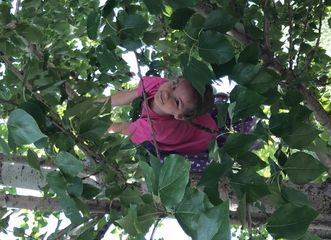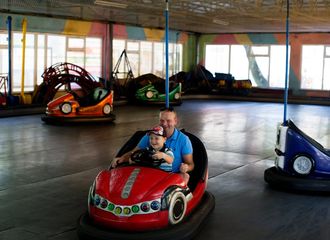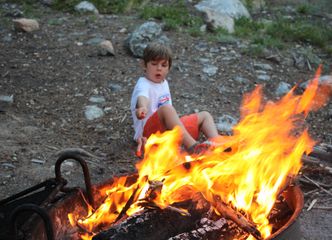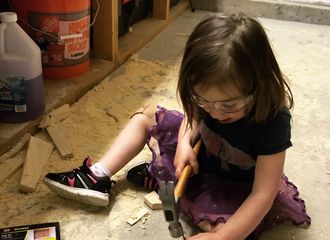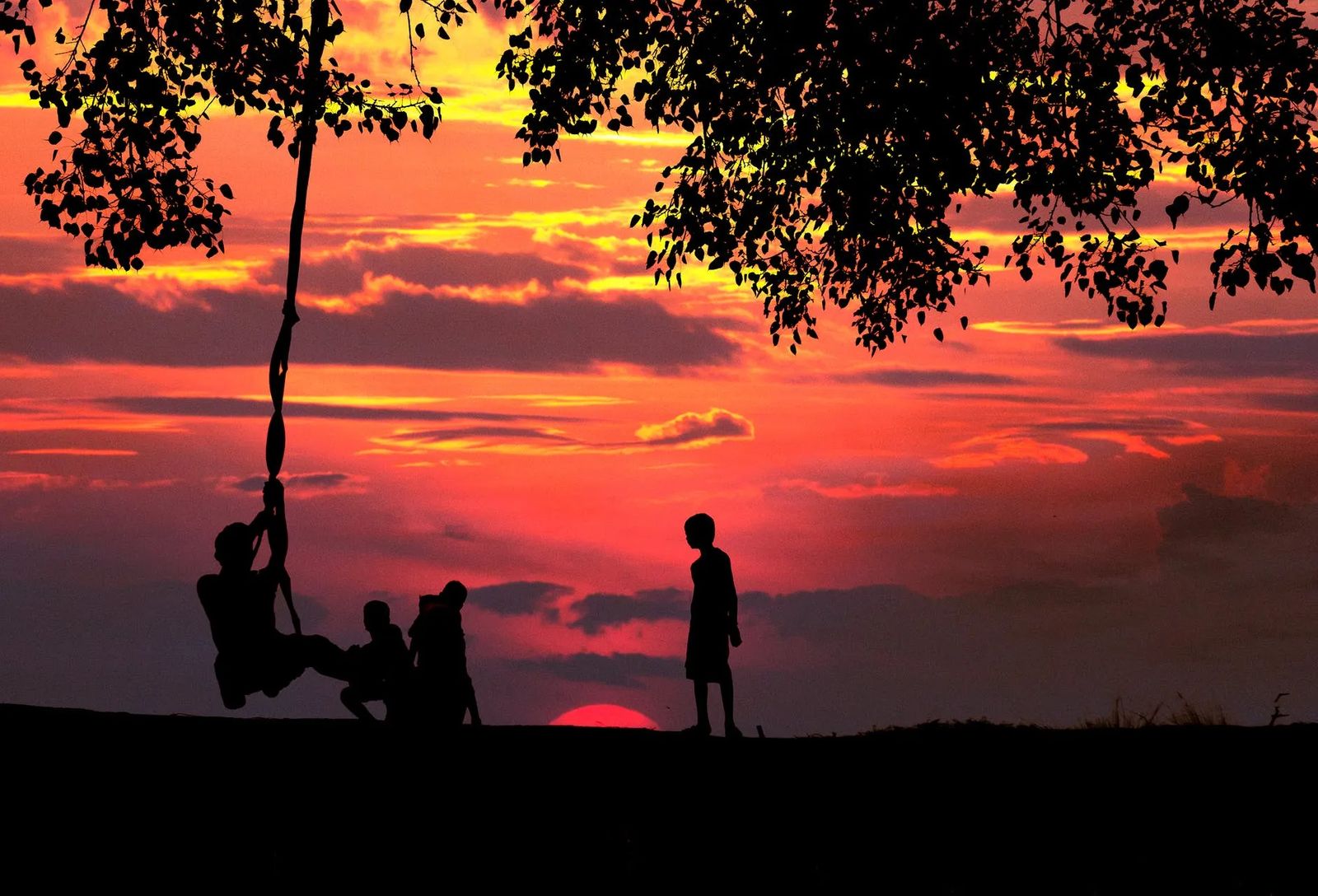
The Downside of Limiting Risky Play
august 1, 2019 | by anna rogers
“Get down from there! You could break your neck!”
We’ve all heard it before, and chances are, we’ve probably said it. Words of caution are rooted in an instinct to nurture and protect. Their aim is true, but what if their result is detrimental?
Keeping our kids too safe is actually hurting our kids.
While it seems counterintuitive, overprotecting kids and regulating their play is yielding negative effects – physically, mentally, and emotionally. Our societal shift toward “risk-free” environments is actually setting our children up for more risk down the road.
Instilling Confidence
Sarah Chatwood sees firsthand the benefits of risky play for children through teaching preschool at the Montana Audubon Center in Billings. This nature preschool program incorporates risky play for young children, allowing kids to explore their own limits. The result is more confident, capable children.
“I notice that when my students realize that an adult trusts them to make decisions for themselves, they gain the confidence to make their own good decisions. They build trust in themselves instead of always looking to someone else to set boundaries for them,” Chatwood says.
In nature, children are exposed to the wild, the imperfect, and the uneven. They face fears and become acquainted with the world around them – touching bugs and thorns, playing in the mud, and getting splinters. These experiences are essential building blocks that lay the foundation for a healthy and happy childhood, teenage years, and beyond.
Lorinne Burke, LCPC, has been providing counseling to children for 23 years and sees a lot of depression in kids who do not know how to be confident. “Seemingly high-functioning children begin struggling in high school or fail out their freshman year of college. They are so risk- and failure-aversive that they won’t attempt things that don’t yield instant success.” She says that allowing kids to wrestle with risk while parents are there to support is key, but that parents should not try to be “Rescue Rangers.”
Equipping the Body
These moments of confidence-building have physical benefits as well, and likewise, safeguarding against risky experiences yields a negative physical impact on kids.
“I came to the counterintuitive conclusion that engaging in risk is actually very important in preventing injuries,” says Dr. Mariana Brussoni, a scientist with the Child & Family Research Institute in Vancouver who has studied the effects of safe playgrounds on children. She has found that early formation of risk management skills can reduce the risk of injury later.
When parents step aside and give children the freedom to play and take risks, kids gain more than just wisdom and confidence. Their balance improves, their grip strengthens, their muscles develop, and their motor skills progress. They learn to fall, crash, or land in a way that protects their body from injury. They become physically hardy with the ability to react to and navigate the unpredictable in life.
Developing the Mind
The risks that children encounter in play are not unlike the challenges they’ll face later in life. There are obstacles and dangers in this world. The unexpected will happen, and our children will one day face opposition in many shapes and sizes.
Because of these truths, it’s easy to see how removing all obstacles and hazards from our children’s play leaves them unprepared for the real world, struggling to cope with the trials of life, and often even battling mental health issues.
An increase in resilience from risky play combats many of the issues plaguing today’s children and teens, such as depression and attention deficit disorders.
Coping with Fear
“A lot of young moms are very afraid of their child dying, so they overprotect,” says Lorinne Burke. “Moms in this culture are taught to fear. This fear is not crazy or overreactive, it’s a logical response. I usually try to get moms to think about: 'What kills you, and what just hurts?' Falling hurts, but falling down stairs can kill you. Protect the stairs, but let them fall in the front yard."
Burke emphasizes the importance of tailoring risky play for each child. "It's important to note that some children have a propensity to take risks, and some don't. Explain the dangers to those who have a propensity to take risks and encourage them to assess and have a safety plan. If you have a kid who is very risk-aversive, talk with them about how they can bring in a little risk.
Raising Adventurers
The child exposed to risky play is likely confident, physically sound, and mentally stable; ready to take on an adventure. Given the freedom to explore, children expand their creativity and imagination. They are connected to the natural world around them, they face challenges with determination, and above all else, they are free to have fun!
As parents, we can feel confident that allowing our kids to encounter risks is actually the best thing we can do to support healthy, happy, adventure-filled lives for the little ones we love the most.
5 Key Elements of Risky Play:
5 Tips for Implementing More Risky Play:
- Step back and observe. Instead of jumping in immediately when you see your child engaging in risky behavior, take a few breaths, and observe how they handle it. Trust them to navigate the situation and support them by keeping your distance.
- Stop directing play. We should not always be guiding and structuring our children’s play. Give kids the freedom to be creative and use their own imagination to entertain themselves.
- Get outdoors. Move away from urban, risk-free environments, and get your child outdoors in undeveloped places. Provide access to loose materials such as logs, sticks, ropes, planks, and water.
- Give physical space. Children need the freedom to roam and make decisions apart from parents. Let children play in the yard or neighborhood on their own.
- Don’t let your own fears get in the way. Arm yourself with the facts instead of letting fear control your parenting. Observe your child’s abilities and take small, gradual steps to work toward giving more freedom.
Originally printed in the August 2019 issue of Simply Family Magazine
Never miss an issue, check out SFM's digital editions here!

